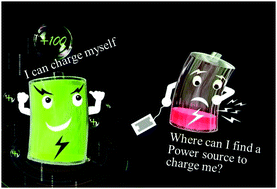Ubiquitous clean and sustainable energy-driven self-rechargeable batteries realized by and used in organic electronics
Abstract
Organic electronics have the advantages of low manufacturing cost, light weight, good flexibility, and good conformity to different surfaces. They are ideal for many emerging applications such as wearable electronics, sensors for the Internet of Things (IoT), e-paper, smart labels and tags, intelligent packaging, medical devices, smart windows, so on and so forth. As organic electronic products begin to enter the market, an issue has become increasingly prominent, that is, the lack of power supplies suitable for these devices. Since many organic electronic products are designed to operate off-grid frequently or continuously, batteries are usually used to power these devices. The existing batteries are cumbersome and need to be charged frequently with grid power, which is not only inconvenient, but also impractical for some applications. To meet this urgent need, self-rechargeable batteries that generate and store electrical energy in a single device have recently been extensively studied. These batteries can be self-recharged using ubiquitous clean and sustainable energy sources such as light, atmospheric oxygen, body movement, airflow, or wind. Furthermore, they can be integrated with other types of electronic devices to form an autonomous self-powered system. Some prototype self-rechargeable batteries have already shown promising performance in powering light-emitting diodes, sensors, LCD displays, etc. Certain types of organic electronics, such as organic piezoelectric generators, organic solar cells, organic batteries, and organic electrochromic devices, which can collect environmental energy and convert it into electrical energy or store electrical energy, have been playing a key role in the development of self-rechargeable batteries. This article reviews the latest developments in various types of self-rechargeable batteries enabled by or suitable for organic electronic products. The working mechanism, performance, challenges, and the future research directions of self-rechargeable batteries are discussed.

- This article is part of the themed collection: Organic Electronics – Ecofriendly and/or sustainable materials, processes, devices, and applications


 Please wait while we load your content...
Please wait while we load your content...